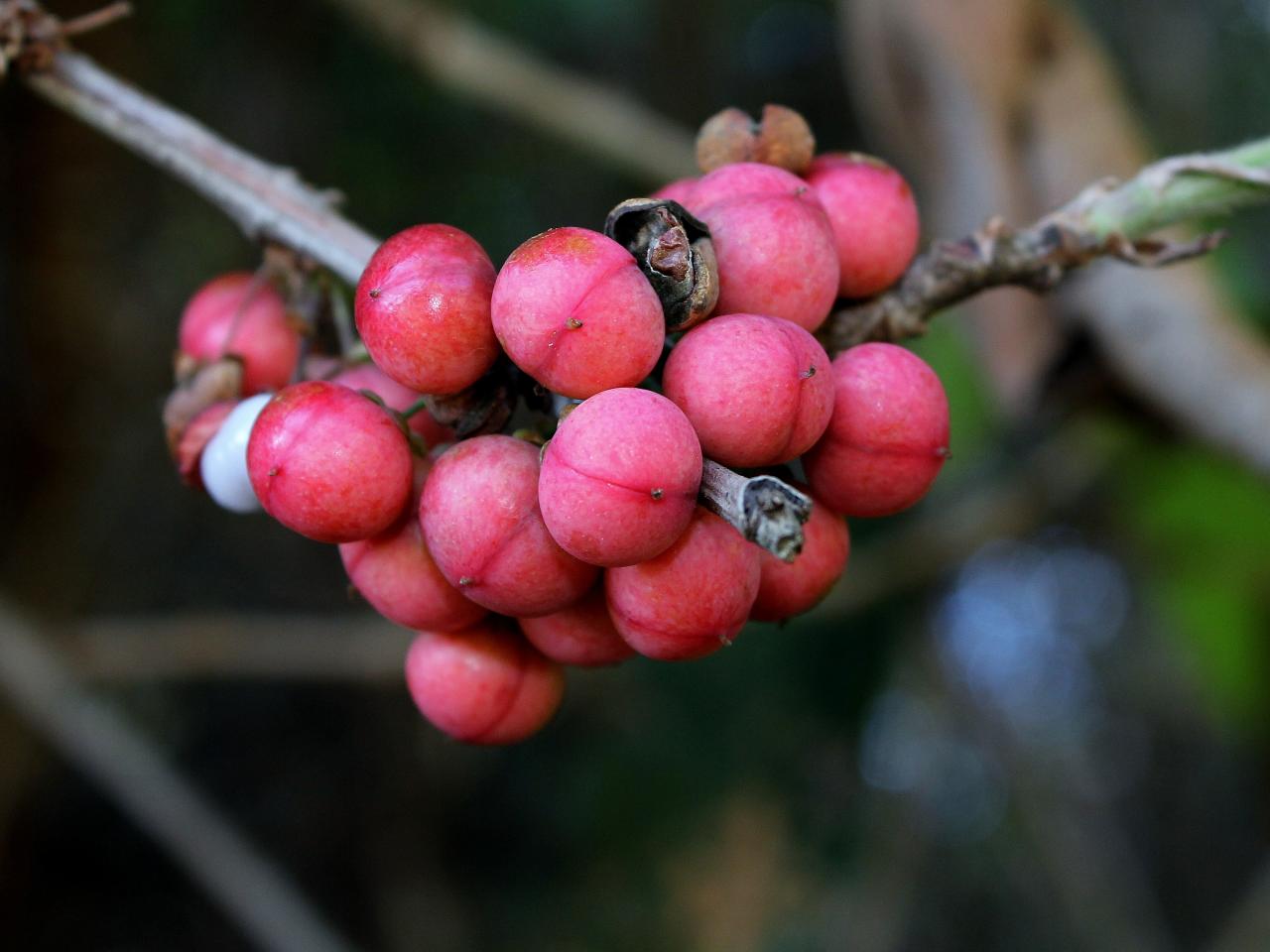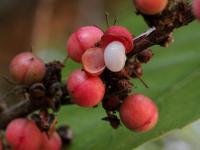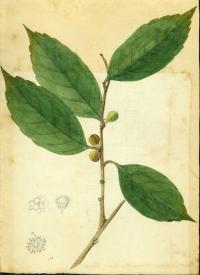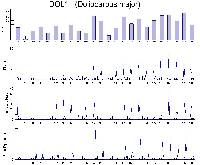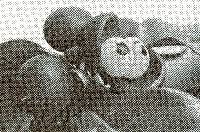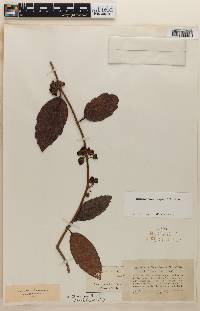
Neotropical Flora
|
Family: Dilleniaceae
[Doliocarpus dentosus C. Martius] |
Liana; bark thin and flaking; older stems often prominently angulate and winged, the younger stems +/- flexuous, usually angulate. Leaves coriaceous; blades elliptic to oblong-elliptic, abruptly acuminate and often downturned at apex, obtuse and decurrent at base onto markedly canaliculate petiole, 5-18 cm long, 2-8 cm wide, +/- glabrous but with the midrib often pubescent, prominently punctate on drying, entire to sparsely serrate, the midrib often arched; juvenile leaves gradually acuminate, prominently serrate, to 32 cm long and 13 cm wide. Flowers 2-3 cm broad, in axillary glomerules or less frequently in 2-flowered cincinni; pedicels 5-12 mm long (10-20 mm long in fruit); sepals 4 or 5, pubescent, to 7 mm long, inconspicuously sericeous inside, persisting in fruit; petals 2 or 3, white or reddish in age, 1-1.5 cm long; stamens numerous, exserted; ovary 1, pubescent; style 6-8 mm long. Fruits red, subglobose, 10-13 mm diam, densely puberulent, dehiscing regularly along median suture, the style 1, often subapical; seeds 2, ca 8 mm long, shiny, black, surrounded except at apex by a fleshy, white, sweet aril, the aril very astringent before maturity. Croat 6833, 12954. Common along the shore and high in trees in the forest. Flowering mostly during June and July, rarely as late as September or as early as May. The fruits mature in the rainy season, mostly from July to November, perhaps chiefly in October, rarely as late as the early dry season. At least some individuals flower twice per season, and they may bear mature fruits when they flower the second time. Leaves usually fall before flowering occurs, dropping mostly at one time and growing in again soon. In Panama, known principally from tropical moist forest in the Canal Zone (both slopes), all along the Atlantic slope, and in Darien; known also from premontane wet forest in Colón and Darien. |
|
|
|
Powered by Symbiota.

